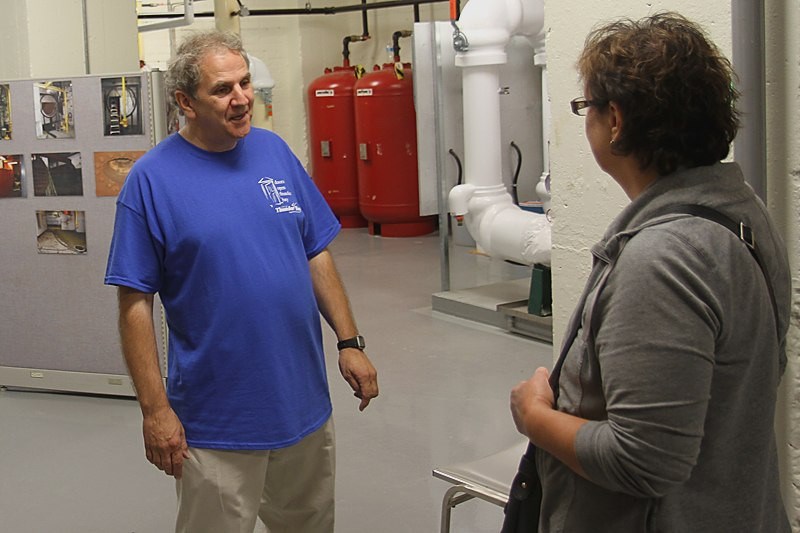THUNDER BAY – As a society we often have a singular gaze upon future development, new buildings and what’s next.
Sometimes this means we lose sight of where we started.
In Thunder Bay that is especially evident at the century-old James Whalen Building.
Rob Hewitson, the lead hand at the Whalen Building, said recent renovations have been extensive and will ensure the unmistakeably historical building will remain functional.
“They’ve replaced 5,500 bricks. You look at it after and you don’t know that and a lot of the things the city has been doing with the building,” Hewitson said of the exterior work.
“It has been extending its life for the future.”
The eight-storey Whalen Building, which officially opened in 1914, was one of more than a dozen landmarks featured Saturday in the Open Doors Thunder Bay 2014 initiative, a biannual program hosted by the Heritage Advisory Committee that allows people to see and learn about historical buildings in the city.
Hewitson, who has more than 20 years of experience at the Whalen Building, provided a guided tour throughout the afternoon highlighting both the history and modern developments.
Within the last decade the building has removed its original heating source, a boiler, and replaced it with a more efficient system. However, there are still elements of the building which date back to its beginnings, such as the original marble floors.
The building was constructed by James Whalen, a former business mogul, with a neo-Gothic terra cotta exterior that was designed to resemble the early 20th century Chicago skyscraper, complementing Whalen’s goal of making the Lakehead the “Chicago of the North.” When it was constructed it was by far the tallest building in the area.
It was purchased in 1931 by the Port Arthur Public Utilities Commission and was the former seat of government for the City of Port Arthur, housing their city hall on the second and third floors. It currently lists the offices of Thunder Bay Hydro as enterprises that call the building home.
Gloria and Megan Bylund were checking out some of the downtown north core landmarks early in the afternoon and made the Whalen Building their first stop.
They weren’t disappointed.
From there they ventured across the street to the Prince Arthur Hotel and Gloria Bylund was fascinated by the history that often is forgotten.
“Even being here my whole life I never realized the history. For example, we were in the (Prince Arthur Hotel) and talked about how the poppy came to be and that campaign was started here,” she said.
“It is stuff you don’t learn in school. You take advantage of these buildings because you have business to conduct but you don’t take a moment to appreciate the beauty of them.”
This year’s featured destinations with an emphasis on the First World War era, whether it be buildings constructed during that time period or memorials to veterans such as the Waverley Park cenotaph, Thunder Bay city hall cenotaph and Mount McKay monument
Other locations included the HMCS Griffon, Shuniah Masonic Hall and St. Paul’s United Church.
But for Hewitson, the day was an opportunity for the public to become acquainted with a building he knows like the back of his hand.
It also shows people why millions of dollars have been spent to ensure the legacy of the building, as well as Whalen himself, continue to live on.
“I’m really surprised. Everybody has been in favour of what the city has been doing with the building. They’ve done a great job of restoring some of the features and it’s nice to see,” Hewitson said.
